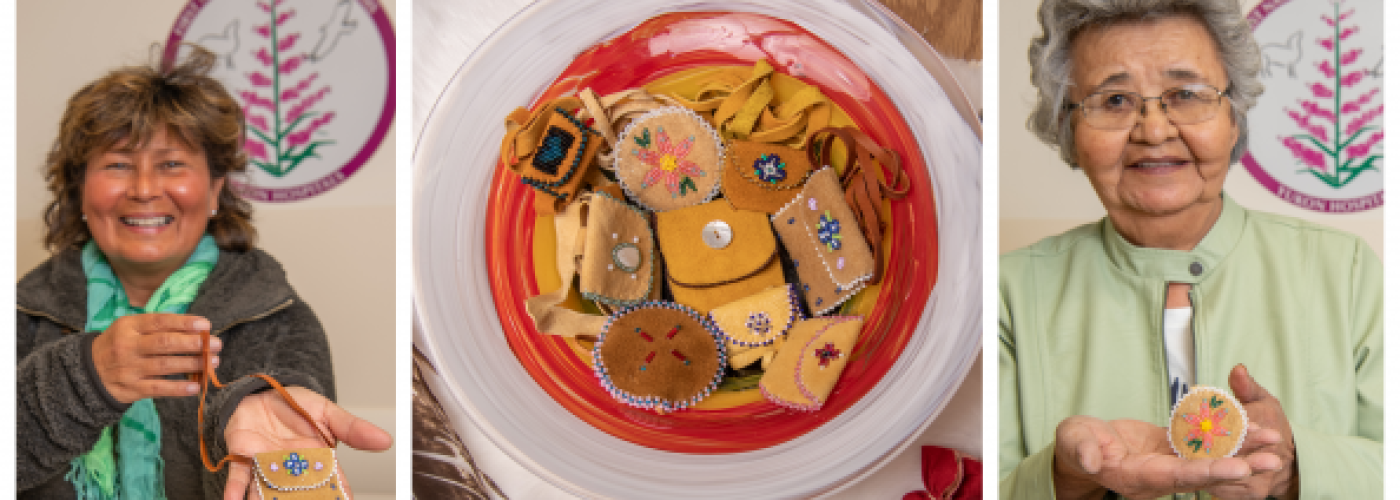
Partnership with Council of Yukon First Nations (CYFN) enhances maternity care at Whitehorse General Hospital (WGH)
Late last year, Yukon Hospitals’ First Nations Health Programs (FNHP) team was looking for ways to add traditional teachings, cultural support and extra resources into the care they provide maternity patients at WGH.
While the FNHP team provides teachings and ceremonies in hospital, helps connect patients to helpful resources, and advocates for patients in Yukon’s health system, they wanted to connect new mums and the next generation to their culture.
Led by Krystal Olito, Cultural Programs Coordinator, the team decided to offer a gift package to First Nations mothers after the birth of their child. The gifts would include a card from the FNHP team, a traditional teaching and postpartum tea.
“When looking at how we could improve First nations maternity care, we saw a gap between the medical experience and traditional ways and teachings,” says Krystal. “Birth is such a beautiful, sacred milestone, so we wanted to combine the clinical with the cultural and enhance the care we provide patients and their families.”
First Nations birth practices
Krystal and the team were also inspired by First Nations mothers who sew and bead beautiful, intricate umbilical cord bags, and wanted to find a way to include a bag in the package for each new mother.
With support from Alexis Hougen and Sarah Johnston-Smith from CYFN, the team enlisted a roster of expert and Elder First Nations sewers and beaders from across the territory to begin making bags to add to the gift packages. The team has since provided over 50 new mothers with gift packages and a unique bag.
Traditional teachings
The baby’s belly button and umbilical cord hold significance for many First Nations. The mother can decide whether to keep the umbilical cord after it falls off, or return it to the land.
Depending on different traditional teachings, placing the cord in certain locations on the land—near a river by a beaver dam, in a tree, in an anthill, or in the mountains, for example—will help shape certain characteristics of the child.
Krystal’s teaching focuses on placing the cord in an area where beavers work.
“As hard-working, industrious animals, beavers are sacred to many First Nations,” says Krystal. “Birth teachings for fathers might also incorporate the claws, pelt or tail.”
The gift package offers a cultural component to the care mothers receive, and the teaching opens conversations about the father’s role to harvest an animal with family members and complete his cultural teaching following the birth of a child.
Thank you to all the expert and Elder sewers who support the program!
Sewers who contribute include Misty Fayant, Juanita Ellis, Sharon Vittrekwa, Gertie Tom, Lena Moon, Minnie Clark, Dalyce Huot, Debbie Porter, Rose Wilson and Reina Thurmer.
About Us
- Our Hospitals
- Board of Trustees
- Leadership Team
- News & Events
- Careers & Volunteers
- Our Position on Racism, Equity, Diversity and Inclusion
Last Updated:Wed, 08/11/2021 - 12:40